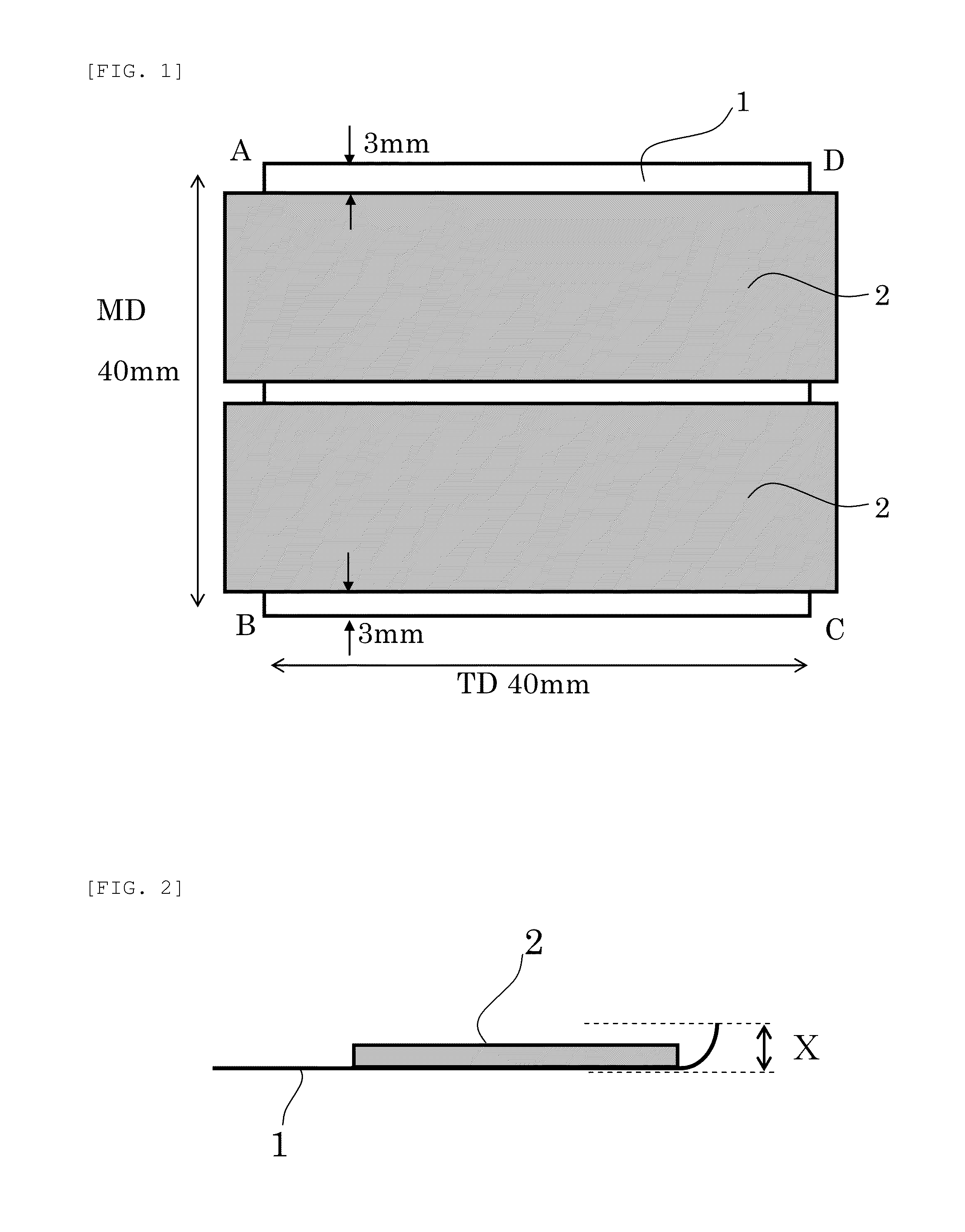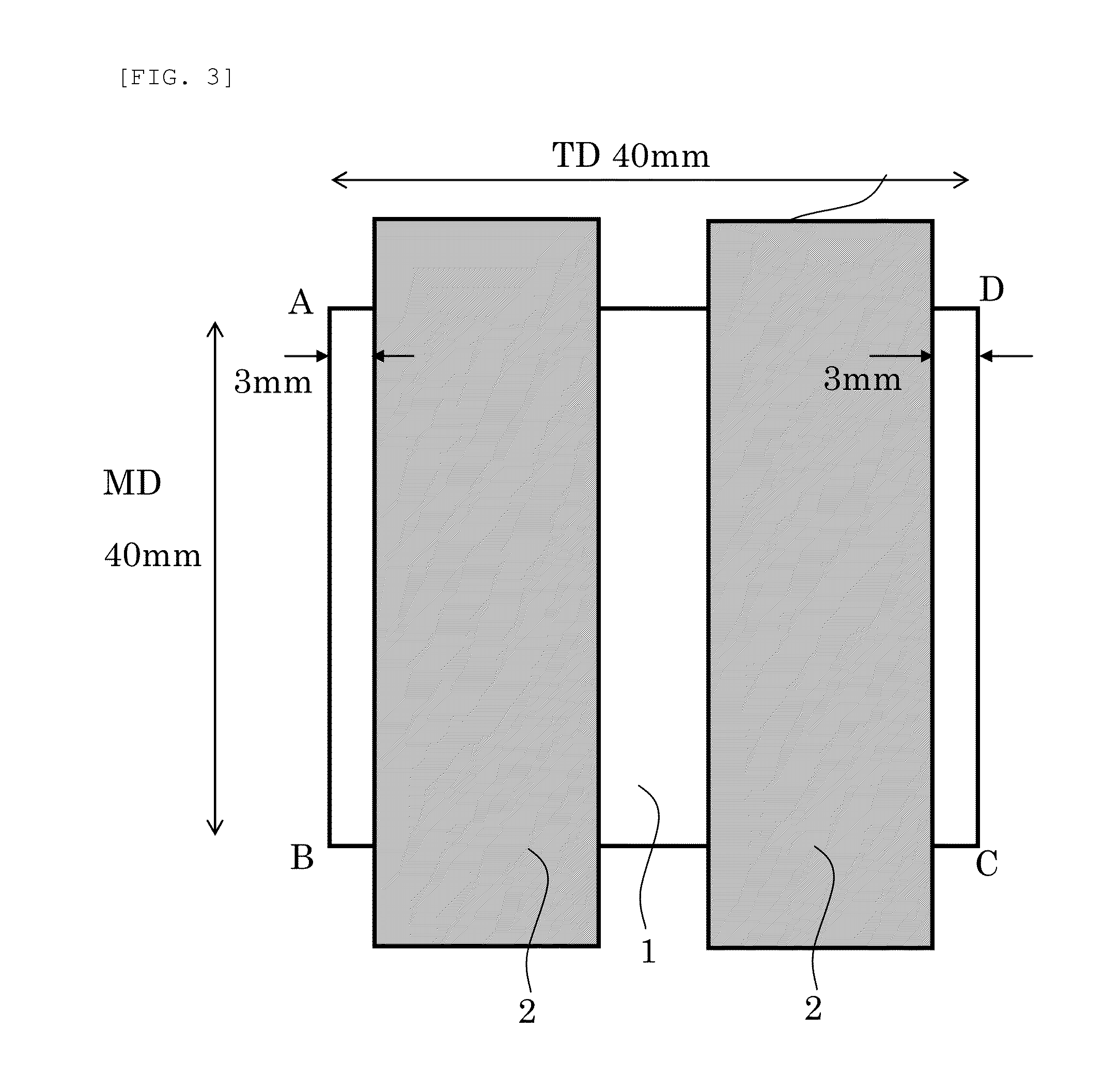Non-aqeous secondary cell separator and non-aqueous secondary cell
a secondary cell and non-aqueous technology, applied in the field of non-aqueous secondary cell separator and non-aqueous secondary cell, can solve the problems of cell smoke, fire, explosion, etc., and achieve the effects of improving cell production efficiency, low moisture amount, and sufficient thermal dimensional stability
- Summary
- Abstract
- Description
- Claims
- Application Information
AI Technical Summary
Benefits of technology
Problems solved by technology
Method used
Image
Examples
example 1
[0111]A coating liquid (an aqueous dispersion) having a solid content concentration of 28.4 mass % was prepared by uniformly dispersing a particulate polyvinylidene fluoride type resin (TRD202A, manufactured by JSR Corporation), magnesium hydroxide (Kisuma 5P, manufactured by Kyowa Chemical Industry Co., Ltd.), carboxymethyl cellulose (CMC), and ion exchanged water. Incidentally, in the coating liquid, adjustment was performed such that the mass ratio of the inorganic filler, the polyvinylidene fluoride type resin, and the CMC was 94.0 / 5.0 / 1.0.
[0112]As the porous base material, a polyethylene microporous film having a film thickness of 12.4 μm, a Gurley value of 170 sec / 100 cc, and a porosity of 35.5% was used. After the surface of this porous base material was subjected to a corona treatment, the above coating liquid was coated on one surface of the porous base material using a bar coater No. 6 with a clearance of 20 μm and dried at 60° C.
[0113]By doing this, a separator composed o...
example 2
[0114]A separator was obtained in the same manner as in Example 1 except that coating was performed using a bar coater No. 8 with a clearance of 30 μm.
example 3
[0115]A separator was obtained in the same manner as in Example 1 except that coating was performed using a bar coater No. 6 with a clearance of 30 μm.
PUM
| Property | Measurement | Unit |
|---|---|---|
| width | aaaaa | aaaaa |
| thermal shrinkage rate | aaaaa | aaaaa |
| thickness Ta | aaaaa | aaaaa |
Abstract
Description
Claims
Application Information
 Login to View More
Login to View More - R&D
- Intellectual Property
- Life Sciences
- Materials
- Tech Scout
- Unparalleled Data Quality
- Higher Quality Content
- 60% Fewer Hallucinations
Browse by: Latest US Patents, China's latest patents, Technical Efficacy Thesaurus, Application Domain, Technology Topic, Popular Technical Reports.
© 2025 PatSnap. All rights reserved.Legal|Privacy policy|Modern Slavery Act Transparency Statement|Sitemap|About US| Contact US: help@patsnap.com



